#indigenous artists
Video
Indigenous Horror Films
#tiktok#indigenous horror films#Indigenous art#Indigenous writers#Indigenous artists#indigenous#watch this#mexican indigenous folklore#folklore#horror#horror films#movies#film#inuit#indie horror film#mythology
13K notes
·
View notes
Text

Article Link
"Minnetonka first started selling its “Thunderbird” moccasins in 1965. Now, for the first time, they’ve been redesigned by a Native American designer.
It’s one step in the company’s larger work to deal with its history of cultural appropriation. The Minneapolis-based company launched in the 1940s as a small business making souvenirs for roadside gift shops in the region—including Native American-inspired moccasins, though the business wasn’t started or run by Native Americans. The moccasins soon became its biggest seller.

[Photo: Minnetonka]
Adrienne Benjamin, an Anishanaabe artist and community activist who became the company’s “reconciliation advisor,” was initially reluctant when a tribal elder approached her about meeting with the company. Other activists had dismissed the idea that the company would do the work to truly transform. But Benjamin agreed to the meeting, and the conversation convinced her to move forward.
“I sensed a genuine commitment to positive change,” she says. “They had really done their homework as far as understanding and acknowledging the wrong and the appropriation. I think they knew for a long time that things needed to get better, and they just weren’t sure what a first step was.”

Pictured: Lucie Skjefte and son Animikii [Photo: Minnetonka]
In 2020, Minnetonka publicly apologized “for having benefited from selling Native-inspired designs without directly honoring Native culture or communities.” It also said that it was actively recruiting Native Americans to work at the company, reexamining its branding, looking for Native-owned businesses to partner with, continuing to support Native American nonprofits, and that it planned to collaborate with Native American artists and designers.
Benjamin partnered with the company on the first collaboration, a collection of hand-beaded hats, and then recruited the Minneapolis-based designer Lucie Skjefte, a citizen of the Red Lake Nation, who designed the beadwork for another moccasin style and a pair of slippers for the brand. Skjefte says that she felt comfortable working with the company knowing that it had already done work with Benjamin on reconciliation. And she wasn’t a stranger to the brand. “Our grandmothers and our mothers would always look for moccasins in a clutch kind of situation where they didn’t have a pair ready and available to make on their own—then they would buy Minnetonka mocs and walk into a traditional pow wow and wear them,” she says. Her mother, she says, who passed away in 2019, would have been “immensely proud” that Skjefte’s design work was part of the moccasins—and on the new version of the Thunderbird moccasin, one of the company’s top-selling styles.
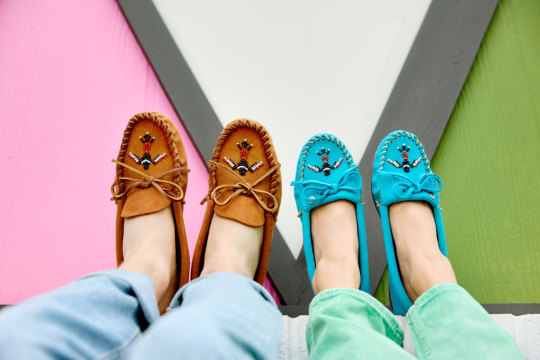
[Photo: Minnetonka]
“I started thinking about all of those stories, and what resonated with me visually,” Skjefte says. The redesign, she says, is much more detailed and authentic than the previous version. “Through the redesign and beading process, we are actively reclaiming and reconnecting our Animikii or Thunderbird motif with its Indigenous roots,” she says. Skjefte will earn royalties for the design, and Minnetonka will also separately donate a portion of the sale of each shoe to Mni Sota Fund, a nonprofit that helps Native Americans in Minnesota get training and capital for home ownership and entrepreneurship.
Some companies go a step farther—Manitobah Mukluks, based in Canada, has an Indigenous founder and more than half Indigenous staff. (While Minnetonka is actively recruiting more Native American workers, the company says that employees self-report race and it can’t share any data about its current number of Indigenous employees.) Beyond its own line of products, Manitobah also has an online Indigenous Market that features artists who earn 100% of the profit for their work.
White Bear Moccasins, a Native-owned-and-made brand in Montana, makes moccasins from bison hide. Each custom pair can take six to eight hours to make; the shoes cost hundreds of dollars, though they can also be repaired and last as long as a lifetime, says owner Shauna White Bear. In interviews, White Bear has said that she wants “to take our craft back,” from companies like Minnetonka. But she also told Fast Company that she doesn’t think that Minnetonka, as a family-owned business, should have to lose its livelihood now and stop making moccasins.
The situation is arguably different for other fashion brands that might use a Native American symbol—or rip off a Native American design completely—on a single product that could easily be taken off the market. Benjamin says that she has also worked with other companies that have discontinued products.
She sees five steps in the process of reconciliation. First, the person or company who did wrong has to acknowledge the wrong. Then they need to publicly apologize, begin to change behavior, start to rebuild trust, and then, eventually, the wronged party might take the step of forgiveness. Right now, she says, Minnetonka is in the third phase of behavior change. The brand plans to continue to collaborate with Native American designers.
The company can be an example to others on how to listen and build true relationships, Benjamin says. “I think that’s the only way that these relationships are going to get any better—people have to sit down and talk about it,” she says. “People have to be real. People have to apologize. They have to want to reconcile with people.”
The leadership at Minnetonka can also be allies in pushing other companies to do better. “My voice is important at the table as an Indigenous woman,” Benjamin says. “Lucie’s voice is important. But at tables where there’s a majority of people that aren’t Indigenous, sometimes those allies’ voices are more powerful in those spaces, because that means that they’ve signed on to what we’re saying. The power has signed on to moving forward and we agree with ‘Yes, this was wrong.’ That’s the stuff that’s going to change [things] right there.”"
-via FastCompany, February 7, 2024
#indigenous#indigenous artists#indigenous art#moccasins#thunderbird#native american#native american art#cultural appropriation#indigenous peoples#cultural representation#minnesota#minnetonka#minneapolis#red lake nation#ojibwe#anishinaabe#reconciliation#fashion#fashion news#good news#hope#indigenous designers#native artist#indigenous artist
1K notes
·
View notes
Text

a new ref for riet! my dearest oc who's accompanied my art journey since the start of this blog, he's my baby boy and means more than the world to me 🥺💕
#lighthealart#oc:riet#original character#furry#anthro#sfw furry#sfw anthro#furry art#anthro art#indigenous artists#digital art#character design#doberman#opossum#four eyed opossum#latino#mexican#indigenous#native american
309 notes
·
View notes
Text
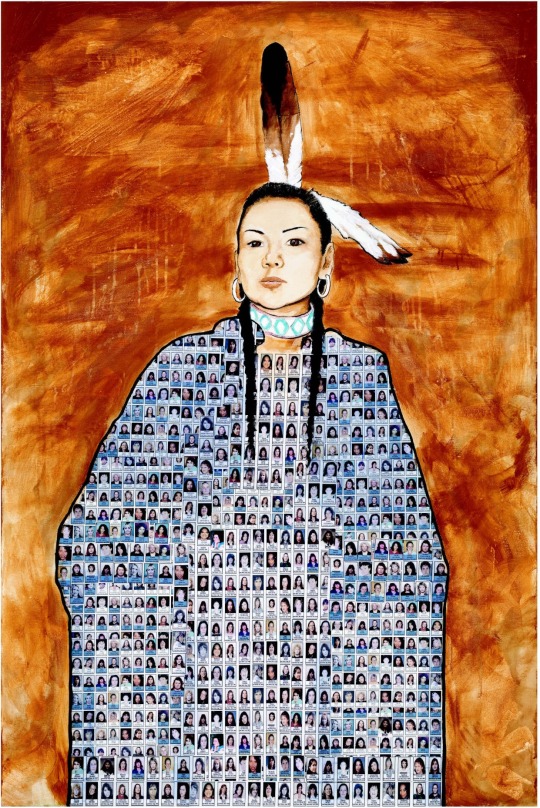
Jonathan Labillois, 'Still Dancing', 2014
"Mr. Labillois' Artist Statement: I donated this to the Montreal Native Women's Shelter to raise awareness of missing and murdered Native women in Canada. I hoped sharing it with others would bring this issue to the minds of many people, and hope that many of our sisters, mothers, aunts or daughters will never be forgotten. The idea for the title came from my little sister who said, "Dancers dance for those who cannot, the sick, the elders, and those who are gone. It's like all those women are still dancing thru her." (Source)
Artist's page here.
395 notes
·
View notes
Text

oxenfree
#my art<3#adore this game#oxenfree#illustration#indigenous artists#latinx artist#two spirit#ndn#spooky art#queer artist#lgbtq#sketchbook#character design#video game art
108 notes
·
View notes
Text
https://ictnews.org/news/big-pink-truck-delivers-books-love-of-native-literature

https://ictnews.org/news/big-pink-truck-delivers-books-love-of-native-literature
The truck is from the founders of the NDN Book Club, Kinsale Drake, Navajo, and Pte San Win Little Whiteman, Oglala Lakota. The club truck hit the road April 1-5. In addition to distributing books, the team handed out product donations curated by sponsor Amy Denet Deal from 4KINSHIP, a Navajo brand that uses runway fashion to fund social good projects on Navajo Nation like the Yilta Book Drop.
NDN Book Club is a nonprofit, literary organization run by and for Indigenous peoples that hosts free youth workshops, author talks, uplifts Indigenous literature, supports Indigenous booksellers, and sends out free Native books. They are supported by Native actress Amber Midthunder (“Prey”) and model activist Quannah Chasinghorse.
In 2023, they distributed more than 2,000 free books by Indigenous authors to Native youth across Turtle Island, supplied by diverse Indigenous booksellers, publishers and authors. From Muckleshoot in Washington to Piscataway lands in the Northeast, they lead workshops in classrooms, tribal libraries, tribal colleges, book festivals and museums.
#indigenous#native american#books#navajo nation#oglala lakota#indigenous people#indigenous writers#indigenous artists#good news#ndn#literature#native literature
66 notes
·
View notes
Text

Meet The (Updated) Art Team
Hello Kinfolks!
I've been really looking forward to this post for a while, and it's now time to unveil the art team I've assembled to put this project together! They're some heavy hitters that y'all ought to recognize, so without further ado let's meet them!
Bek Andrew Evans
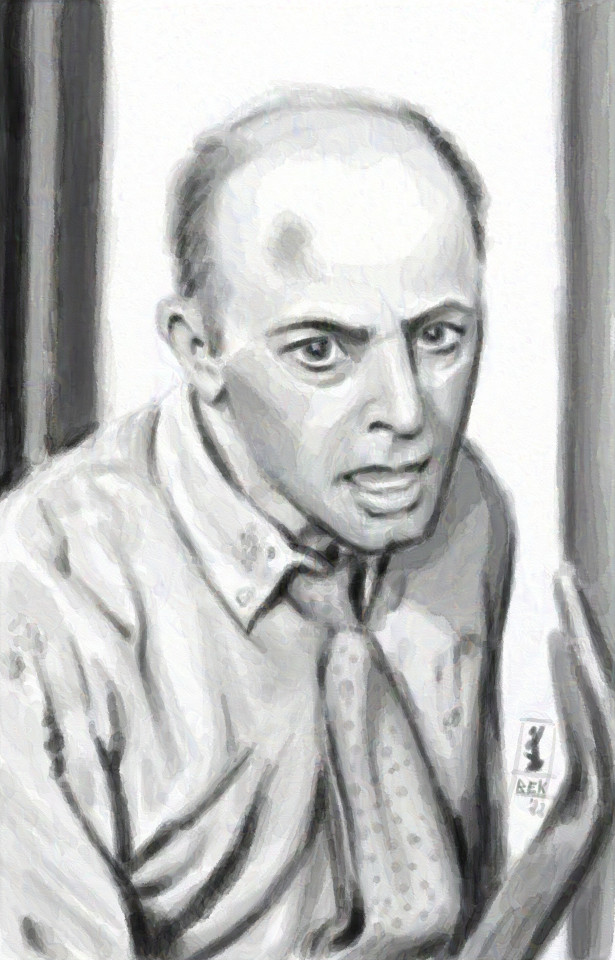
Linktree
Mx. Bek Andrew Evans (he/they) is a freelance writer and illustrator from Jackson, Mississippi. He's been doing art since he was young and takes inspiration from comic books (particularly in the 90s), Jhonen Vasquez, grunge, and Carvagio. His favorite mediums are loose inks, watercolors, oil paints, and digital styles that replicate the looks of traditional mediums. He uses body horror and attention to expressions and lighting to convey stories through images, often queer in nature. He explores themes of mental illness, disability, abuse, poverty, and the many intersections of these statuses.
iezeradd (They/He)
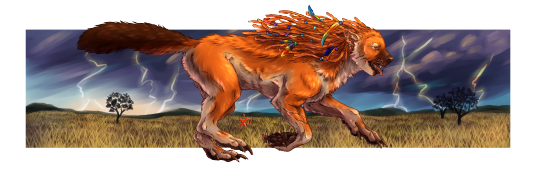
Carrd
They are a mixed media artist and writer hailing from Quebec, Canada. They explore concepts of queerness, identity, generational trauma, and otherness through his illustrations of werewolves, often contrasting tenderness and violence in his works. They use transformations and inner conflict as a reflection of his own experiences as a queer individual.
iezeradd is joining the team to provide a myriad of art, ranging from props, to textures, and tribe artwork! We're very fortunate to have them on the team!
Dogblud She/Her

Tumblr
Dogblud (she/her), is a Midwestern cryptid working as a freelance artist and writer. Her work is near-exclusively sapphic, centering primarily around werewolves, werebeasts, and their strong thematic ties - horrific or otherwise - to all forms of womanhood.
A long-time fan of Werewolf: the Apocalypse, she's joined our team to produce all of the tribe artwork for the book, in addition to a number of other contributory pieces!
Meka (Any Pronouns)
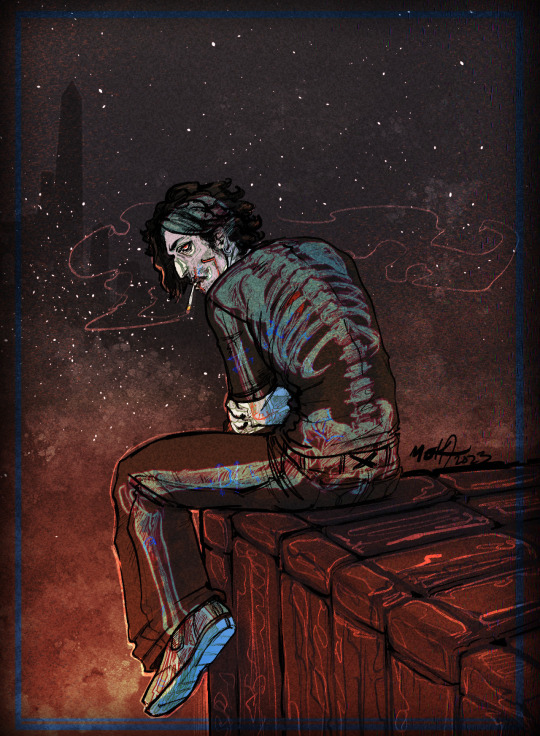
Tumblr
Meka is a Scottish comic artist with a flair for the dark and extremely bloody and a long-standing love of monsters and what they let us all explore-- for better and worse. Vehemently underground, they build stories about horror, grief, depersonalisation, and the isolation that comes with being just a little too weird and too angry to swallow whole. Art and catharsis go hand in hand, as far as she’s concerned.
In a throwback to the original game series, Meka has joined to produce a 22-page fully illustrated comic for the series entitled Cracking the Bone. A postgraduate in traditional comic artistry, we're extremely fortunate to have them on the team.
Mx. Morgan (They/Them)
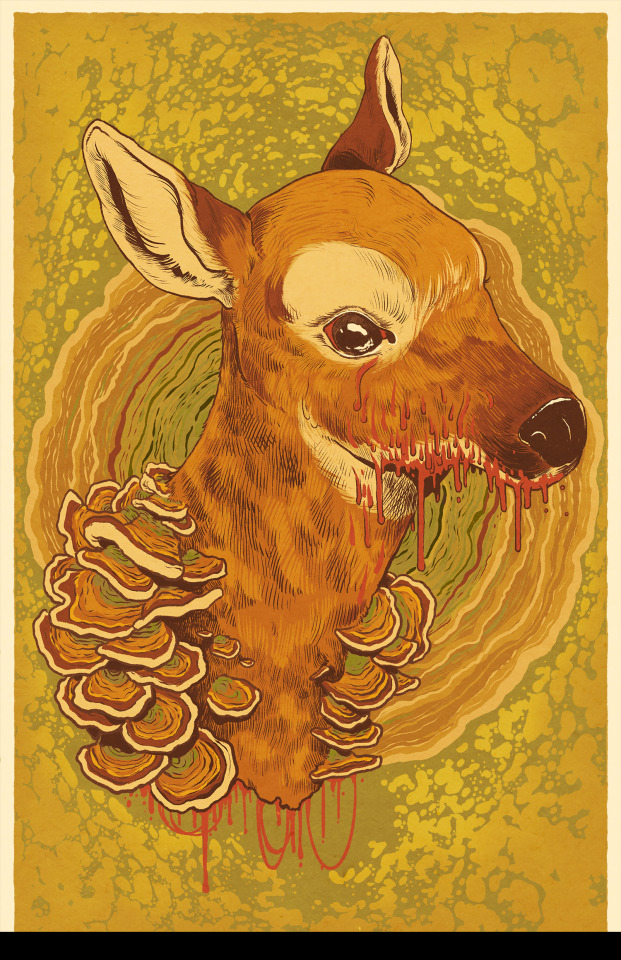
Tumblr
Mx. Morgan G Robles (they/them) is a freelance artist and illustrator based in Seattle, Washington. Their work is best known for its use of macabre themes, animals, and nature. They use these themes to explore mental illness, gender identity, or simply to make neat skulls.
They're known for producing book covers for several major publishers, and they've been brought in to design our book covers as well. In addition, they've developed a number of inside pieces as well!
M.WolfhideWinter (He/Him)

Tumblr
He is a part-time freelance illustrator from Scotland. His work is heavily inspired by the rugged terrain (and rain) of Scotland with a focus on werewolves inhabiting the wild landscapes both past and present. He explores themes of mental illness, societal stigma, dark folklore, and sad werewolves in the rain.
WolfhideWinter has joined our team as our monster-maker, dedicating their time towards depicting our primary antagonists of the garou: The Black Spiral Dancers, and the Wyrm's brood! We can hardly think of a body horror artist more fitting for the role.
#world of darkness#werewolf: the apocalypse#werewolf the apocalypse#werewolves#world building#werewolf#w5#wod#wta#WoD#WoD Artists#WtA#WtA Artists#Gothic Artists#Gothic Punk#Gothic#Gothic Punk Artists#Indigenous Artists#Morggo#Mx Morgan#Dogblud#WLW#WLW Artists#WLW Werewolf#queer#queer artists#meka#mekanikaltrifle#horror comics#comic artists
138 notes
·
View notes
Photo
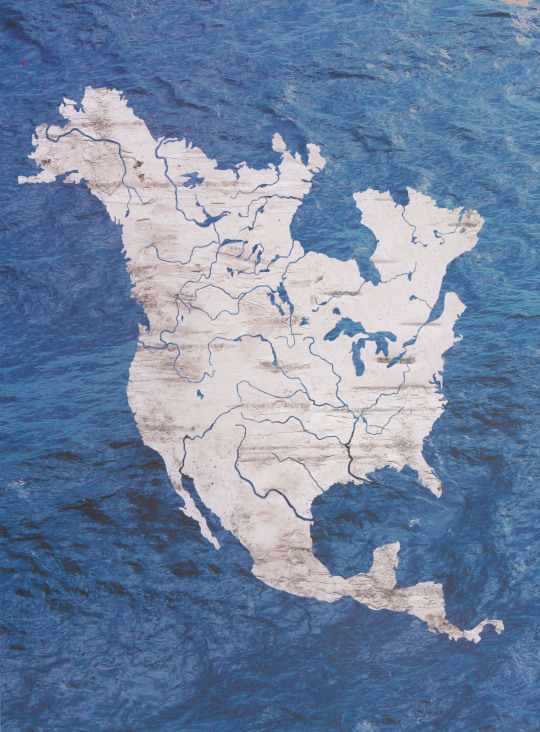

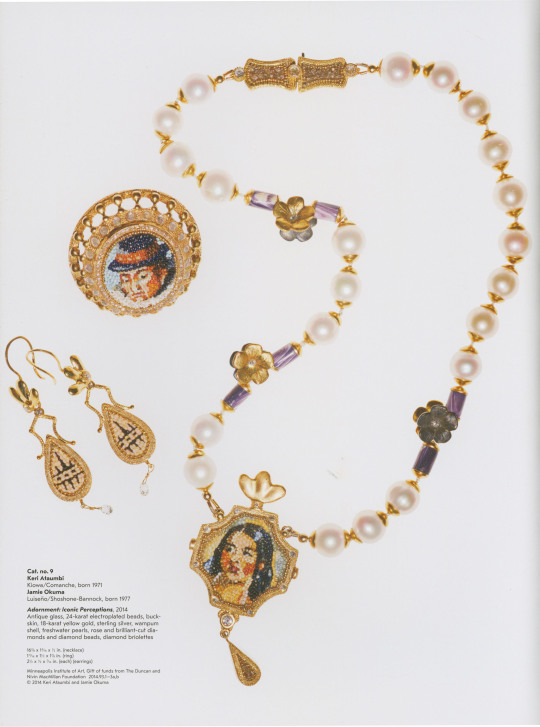

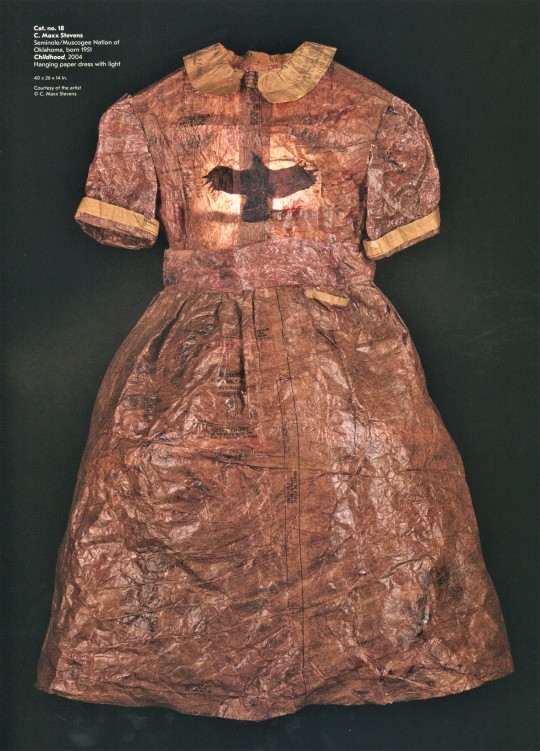

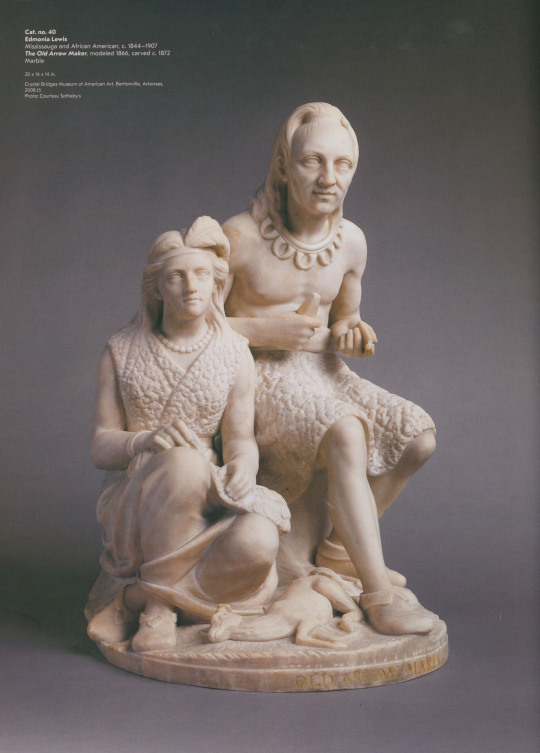
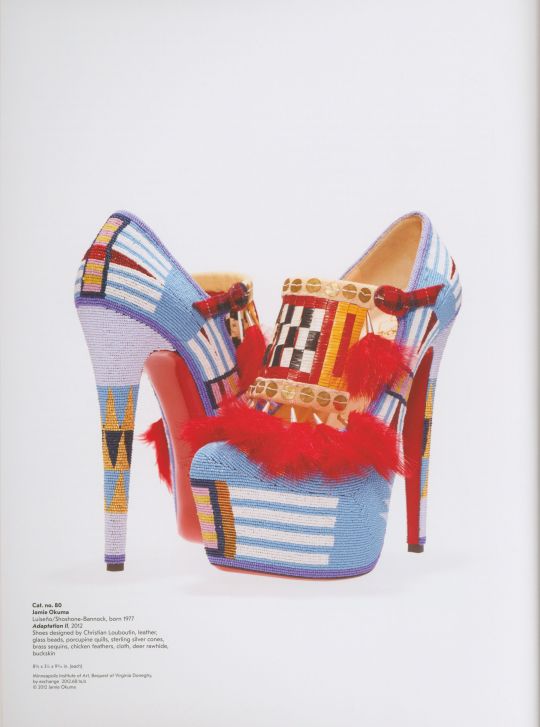


Indigenous People’s Day 2022
Today we commemorate Indigenous People’s Day with art by Native American Women from Hearts of Our People: Native American Artists. This exhibition catalog was published in Minneapolis in 2019 by the Minneapolis Institute of Art (MIA) in conjunction with the University of Washington Press to accompany the traveling exhibit “Hearts of Our People: Native Women Artists.” The exhibition catalog was prepared by MIA curator Jill Ahlberg Yohe and Kiowa artist Teri Greeves.
While the exhibit and its catalog featured art from antiquity through the present, I decided to primarily focus on the work of living artists, with the exception of the marble by Edmonia Lewis. Lewis, born in the mid-19th century to an African-Hatian father and a Black and Mississauga mother, is credited with being the first African American and first Native American to attain international success in the art scene. Trained in and working out of Rome, Lewis incorporated themes of Blackness and Indigeneity into her Neoclassical sculptural work. Whether through the subversion of traditionally European artforms or the reimagining of Indigenous traditions, the contemporary artists featured here alongside Lewis bring the depth of Native visual languages to a wide range of mediums.
Explore the exhibit further through the exhibition page from the Smithsonian American Art Institute, which hosted the exhibit from February 21-March 13, 2020.
View past Indigenous People’s Day posts here.
Find more posts on Native Americans here.
-Olivia, Special Collections Graduate Intern
#Indigenous People's Day#Hearts of Our People#minneapolis institute of art#University of Washington Press#Teri Greeves#jill ahlberg yohe#Edmonia Lewis#Ashley Fairbanks#Joan Hill#Lou-ann Neel#Jamie Okuma#Jody Folwell#C. Maxx Stevens#Christine McHorse#Cara Romero#Keri Ataumbi#Indigenous Artists#Indigenous Art#Indigenous Women#Native American Art#Native American Artists#Native Americans#olivia
343 notes
·
View notes
Text





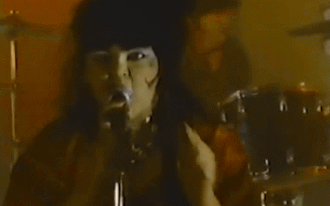
Happy birthday, Debora Iyall! (b. April 29, 1954)
"A lot of disaffected youth were relating to me. I had a lot of girls of color, and bigger girls who were embracing me just as I am. That’s why people loved Romeo Void, because I wasn’t a cookie cutter girl singer. I don’t have that in my being to ever be that, and that is a strength people love." (x)
#HAPPY BIRTHDAY!#Debora Iyall#Romeo Void#classic rock#my gifs#Cowlitz#Indigenous artists#Indigenous musicians
80 notes
·
View notes
Text
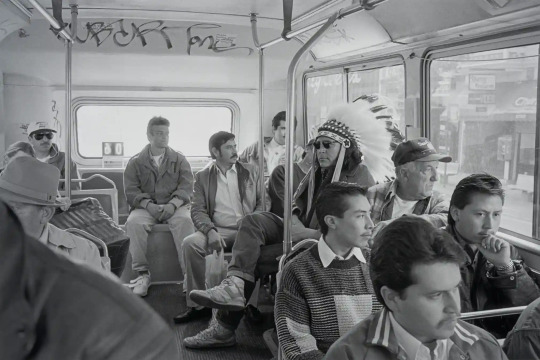
Indian Man on the Bus, Mission District, San Francisco, California, Zig Jackson, 1994
#zig jackson#photography#vintage photography#indigenous art#vintage#black and white photography#american#1990s#1994#indigenous artists#indigenous americans#mandan#hidatsa#arikara
49 notes
·
View notes
Text
Wendy Red Star🎨

Wendy Red Star and her daughter Beatrice

Wendy Red Star - “Apsáalooke Roses” pairs the artist as a child (right) next to daughter, Beatrice, (left) both wearing regalia at the same age, a nod to their intergenerational collaboration as artists & the matrilineal Crow nation.
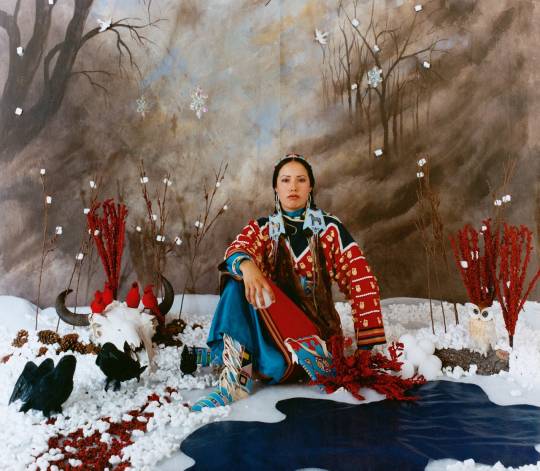
Wendy Red Star - Indigenous Gaze




Wendy Red Star - HER DREAMS ARE TRUE - 2020 - LITHOGRAPH.
Raised on the Apsáalooke (Crow) reservation in Montana, Red Star’s works across disciplines, including photography, sculpture, video, fiber arts and performance, to explore the intersections of Native American ideologies and colonial structures. Red Star researches historic archives and oral traditions in order to incorporate them with her research to create new and unexpected perspectives. Intergenerational collaboration is central to her artistic practice, working frequently with her daughter, striving to create space for Native women’s voices within the context of contemporary American art.

#Indigenous artists#native american artist#indigenous#Wendy Red Star#beatrice#accession#art#photography#photographers#apsáalooke#crow#lithograph
23 notes
·
View notes
Text
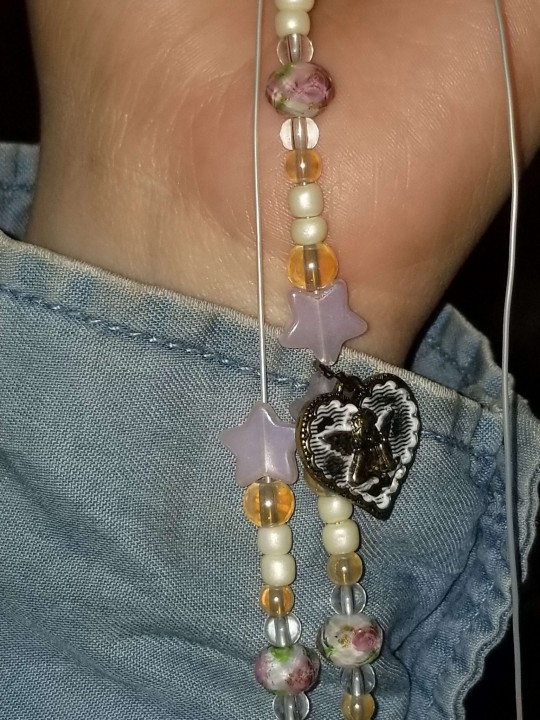
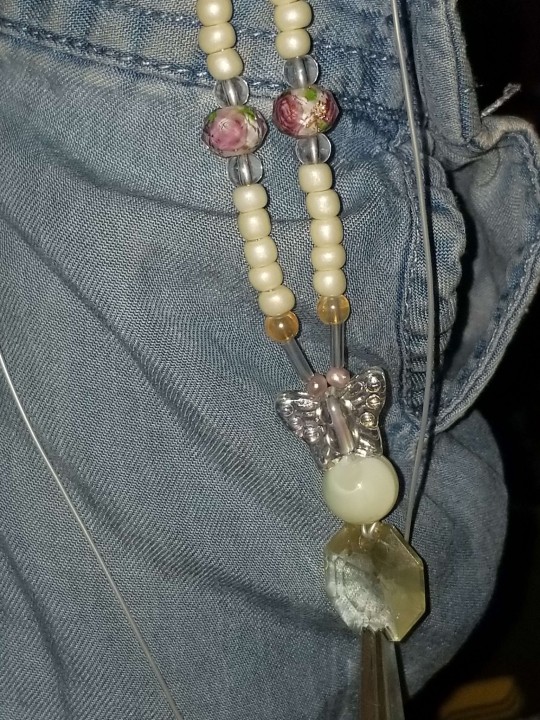
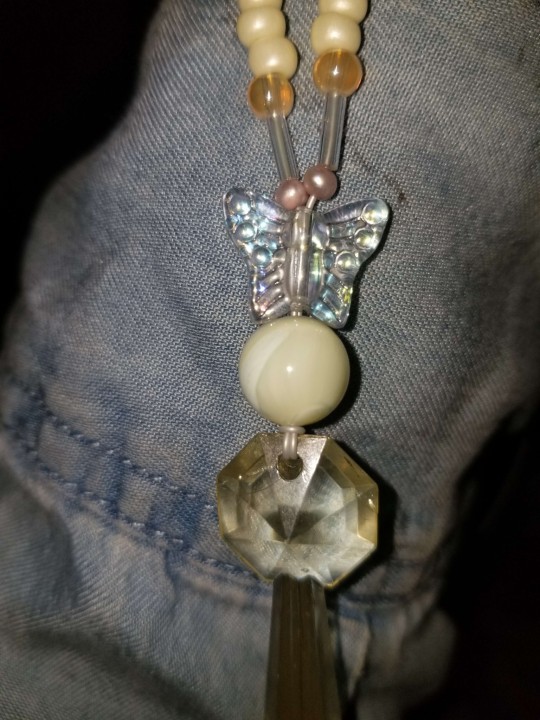

necklace WIP
glass, plastic, pearl, shell, assorted metals
12.15.22
#2022#december 2022#december#handmade jewelry#jewelry#jewelry commission#ndn artists on tumblr#native american artists on tumblr#native artists on tumblr#indigenous artists#artists on tumblr#necklace commission#necklace#handmade necklace
150 notes
·
View notes
Video
A New Brooklyn Sculpture Turns Pop Art on Its Head
Nicholas Galanin’s 30-foot artwork in Brooklyn Bridge Park references an iconic Robert Indiana artwork to enact a critique of settler colonialism.
https://hyperallergic.com/823790/a-new-brooklyn-sculpture-turns-pop-art-on-its-head/
#tiktok#Hyperallergic#article#new york#art#public art#Indigenous artists#Indigenous art#colonization#colonialism#cultural criticism#cultural critique
39 notes
·
View notes
Text

Acoma Pueblo potters (New Mexico)
The World of the American Indian, National Geographic, 1974
#indigenous art#indigenous#indigenas#indigenous history#acoma pueblo#ceramics#native art#indigenous artists#folk art#New Mexico#pueblo#vintage#nat geo
97 notes
·
View notes
Text

Our Share of Night, Mariana Enriquez
#been loving this book#our share of night#my art <3#my fanart#nuestra parte de noche#mariana enriquez#horror art#scary art#spooky art#macabre#latin america#argentina#indigenous art#indigenous artists#illustration#book fanart#booklr#horror fiction#gothic#gothic art#darkart#magical realism#latinx artist#latine artist#literature#illustrator#the dangers of smoking in bed#things we lost in the fire#los peligros de fumar en cama#las cosas que perdimos en el fuego
125 notes
·
View notes
Text
Fake Indian art still a major problem despite federal responsibilities
Criminal pleas surface amid vague ‘Indigenous’ claims
Tuesday, March 14, 2023
By Acee Agoyo, Indianz.Com
Efforts to strengthen the Indian Arts and Crafts Act are gaining new steam as government authorities try to enforce a law aimed at addressing fraud and exploitation of Native cultures and ways of life. On Monday, the Democratic chairman of the Senate Committee on Indian Affairs unveiled a discussion draft bill called the Amendments to Respect Traditional Indigenous Skill and Talent Act of 2023. Also known as the ARTIST Act [PDF], the proposed legislation seeks to protect the arts, crafts, goods and other creative works that American Indian, Alaska Native and Native Hawaiian people have produced since time immemorial.
“The ARTIST Act would update the Indian Arts and Crafts Act to support creative economies and strengthen enforcement of current law and protections against counterfeit competition for Native artists and their works,” the committee said in a news release on behalf of Sen. Brian Schatz (D-Hawaii), the chair of the legislative panel. “This discussion draft reflects direct stakeholder input as well as years of committee oversight and broad commitment to the protection of Native cultural patrimony and revitalization of Indigenous languages,” the release continued.
As enacted in 1990, the Indian Arts and Crafts Act makes it a crime to market, sell or promote an item as “Indian” unless it was created by a citizen of a state or federally recognized tribe or by an artisan certified by a tribe. The law was written to prevent the historical and ongoing misrepresentation of Native arts by non-Native entities. Yet Native artists and their advocates have long complained about the lack of enforcement as fakes and frauds have continued to flood the market and undermine an important source of income in Native communities across the United States.
It’s an issue that Secretary Deb Haaland, who is the first Native person to lead the Department of the Interior, has recognized as a major problem. “Native art is a critical part in telling the story of this country and can only be told by Native artists,” Haaland said in a video message after making history as the first Native person in a presidential cabinet. “Buying authentic pottery, jewelry, mixed-media creations, paintings and other art from Native American artists helps support tribal economies.” “Unfortunately forgery and copies hinder the positive economic opportunities available to Native artists and their families,” said Haaland, who is a citizen of the Pueblo of Laguna.
youtube
The law was updated in 2000 and in 2010 to strengthen enforcement. But as fraudulent works continue to be sold in some of the largest art markets in the U.S., the ARTIST Act builds on prior efforts by broadly expanding the ways in which federal officers can investigate suspected violations. Federal officers, for instance, would be authorized to make arrests, engage in searches and even conduct seizures for suspected violations of the Indian Arts and Crafts Act.
They would also be able to inspect shipments coming into the U.S. to ensure compliance with the law, according to provisions of the draft. And for the first time, Native Hawaiians would gain protections for their creative works. The ARTIST Act modifies existing definitions in federal law to ensure that the original inhabitants of Hawaii aren’t left out of enforcement efforts that are available to American Indian and Alaska Native artisans.
To help pay for these enforcement measures, the ARTIST Act authorizes ways in which people suspected of violating the law can have their property forfeited and be required to shoulder the costs of investigations through fines and penalties. A new Indian Arts and Crafts Forfeiture Fund would be established to assist the work of the Department of the Interior.
The draft discussion bill also requires visible and permanent labeling of items that come into the U.S. from Canada or Mexico. Anything that could “possibly be mistaken for, arts and crafts made by Native Americans” must be “indelibly marked with the country of origin,” according to provisions of the the ARTIST Act.
Finally, the ARTIST Act would require trainings of federal law enforcement officers, not only on the Indian Arts and Crafts Act but on the recently-enacted Safeguard Tribal Objects of Patrimony Act, also known as the STOP Act. The latter law makes it a crime to export tribal cultural property, another issue that has threatened Native cultures and ways of life. “For too long, the export and sale of sacred and culturally significant items from Native peoples in Hawaiʻi, Alaska, and across Indian Country has deprived these communities of their own history and heritage,” Schatz said after the measure was passed and signed into law during the prior session of Congress. “Our bill will help stop the black market trafficking of these items and bring them home.”
Just this month alone, federal authorities announced the resolution of three cases in which the Indian Arts and Crafts Act was violated. In all three instances, non-Natives created and sold fraudulent art by misrepresenting, falsifying and lying about their non-existent tribal backgrounds. In Washington, 52-year-old Lewis Anthony Rath and 67-year-old Jerry Chris Van Dyke, also known as Jerry Witten, pleaded guilty on March 1 to breaking the law.
Both men admitted that they sold fake “Indian” goods in the historic Pike Place Market in Seattle, one of the most heavily trafficked tourist areas in the city. “When non-Native artists falsely claim Indian heritage, they can take sales away from true Indian artists working to support themselves with skills and techniques handed down for generations,” Nick Brown, the U.S. Attorney for the Western District of Washington, said in a news release. “Stores and galleries need to partner with artists to ensure those artisans and craftsmen advertised as Indian Artists truly have tribal status,” Brown added, offering advice to businesses to ensure they comply with the law.
Rath falsely claimed to belong to the San Carlos Apache Tribe — while producing items that mimicked the Pacific Northwest tribal cultures that are hundreds of miles from his supposed Native homeland in Arizona. According to federal authorities, the goods were sold at the Raven’s Nest Treasure and the Ye Olde Curiosity Shop, both of which represented to customers that Rath was Native. And when agents from the U.S. Fish and Wildlife Service, which is part of the Department of the Interior, searched Rath’s home and studio, they found feathers from protected birds — including ones from golden eagles. He pleaded guilty to unlawful possession of these items in addition to violating the Indian Arts and Crafts Act.
Meanwhile, Van Dyke falsely claimed to be from the Nez Perce Tribe and was selling goods that he claimed were of Alaska Native origin — again far away from his supposed tribal background in Idaho. According to federal authorities, he produced the items using materials that were supplied to him by the non-Native owner of a gallery in Pike Place.
“Van Dyke had worked with the gallery for more than ten years, with the gallery owner providing him with woolly mammoth ivory, antlers, animal bones and fossilized walrus ivory to make the pendants that it sold,” the U.S. Attorney’s Office for the Western District of Washington said in the March 1 news release. A day later in Texas, the U.S. Attorney for the Western District announced the sentencing of Kevin Charles Kowalis, 60, for violating the law. According to federal authorities, he falsely marketed and sold jewelry online that he claimed were of “Zuni” and “Navajo” origin even though he does not belong to either tribal nation.
“Fraud can come in many forms but always carries the intent to deceive a victim,” U.S. Attorney Jaime Esparza of the Western District of Texas said in a news release. “Offenders like this defendant victimize both our cherished Native American community and consumers who believe they’re collecting authentic pieces of Native American culture. We will not stand idle while someone takes advantage of our citizens and our federal resources.” Kowalis will serve five years probation for his crime and was ordered to forfeit his inventory, pay a special assessment and pay restitution to a victimized artist from the Pueblo of Zuni.
The total amount appears to be relatively low — less than $1,500, according to court records. No fines were ordered due to his “inability to pay,” the criminal judgment reads. “This sentencing is important in the fight to end this type of fraud,” said Assistant Director Edward J. Grace of the U.S Fish and Wildlife Service’s Office of Law Enforcement. “Our dedicated team of special agents works on behalf of the Department of the Interior and the Indian Arts and Crafts Board to protect American Indian and Alaska Native artists and the consumers who purchase authentic Native American art and craftwork.”
Over in Washington, Rath and Van Dyke are due to be sentenced on May 17. As part of a plea agreement, federal prosecutors said they won’t seek prison time for Van Dyke. Rath did not obtain any promises regarding sentencing in his plea agreement. A federal judge, though, will make the final determination on punishments for both individuals.
“The Indian Arts and Crafts Board (IACB) is very pleased that Jerry Chris Van Dyke and Anthony Rath have been brought to justice for their roles in selling fake Indian artwork in violation of the Indian Arts and Crafts Act,” said Director Meridith Stanton, the leader of the IACB, which is part of the Department of the Interior. “Cases like these are critical to preserving the integrity and viability of authentic Native American art and craftwork in general, as well as preserving the rich cultural heritage of the Nez Perce Tribe and the San Carlos Apache Tribe and the economic livelihoods of their artists and craftspeople,” said Stanton.
The IACB helps look into potential violations of the Indian Arts and Crafts Act, offering examples of possible wrongdoing. But the board’s website notes that items that are marketed or portrayed as “Native American style” or “Native American inspired” can be sold without violating the law — so long as there is “qualified labeling” available to the consumer.
The draft discussion of the ARTIST Act maintains the legality of these categories of “Native American-style jewelry” and “Native American-style arts and crafts” but requires that such items be “indelibly marked” or labeled in a “permanent” fashion, to ensure the consumer is aware that they are not produced by an American Indian, Alaska Native or Native Hawaiian artist.
And while the title of the ARTIST Act contains the word “Indigenous,” the proposed bill does not contain any definitions of a term that has become increasingly used by people who are creating, marketing and selling art that they claim is Native in origin.
An example just emerged in New York, where a self-described activist opened an exhibit in February that appropriates numerous elements of Native culture even after admitting to Indianz.Com that they do not belong to any tribal community. The exhibition, located at a small gallery in the Upper East Side of New York City, notably incorporates the red imagery that Native women developed and brought to prominence to raise awareness to their missing and murdered sisters and relatives. It also includes a visual representation of a Native quilted blanket — albeit with the word “PRETENDIAN” stitched into it.
The Soul of Nations Foundation has prominently marketed the installation as “Indigenous” in origin, a designation that has prompted some Native people to consider reporting it to the Indian Arts and Crafts Board for possible violations of the Indian Artist and Crafts Act. In fact, the non-profit’s executive director and founding member, Ernest Hill, contacted Indianz.Com numerous times in advance of the opening on February 24, soliciting news coverage for an individual who removed all references to their supposed tribal affiliation over a year ago.
Yet Hill, whose parents served as religious missionaries to the Navajo Nation and to other reservations, has since refused to answer questions about the exhibition — including inquiries about the artist’s supposed tribal background.
Materials that Soul of Nations produced for the installation claim it is directed to “Indian Country” but the organization has repeatedly refused to respond to inquiries about the use of the designation in connection with someone who admitted they lack ties to any tribal community. Hill and Soul of Nations also have refused to clarify the source of funding for the project.
In press materials, they proudly assert that the installation has received “support” from the Department of State. On social media, Hill and Soul of Nations gave a different story. In response to a prominent Native environmental leader who has repeatedly attempted to hold the self-described activist accountable for the false claims of tribal belonging, they claimed that “no outside funding was provided for this exhibition.”
When asked to explain the discrepancy between the press materials and the social media post regarding their claim of receiving federal support, Hill and the Soul of Nations refused to respond. The organization started blocking Native users on social media and began restricting interactions on one of its accounts after questions were raised about the installation. The Soul of Nations website, incidentally, includes a prominent reference to the “Senate Committee on Indian Affairs” on a page that has been used to solicit monetary donations. The Department of State is also listed in the same section of the site.
Since the opening of the installation last month, the self-described “Indigenous” individual has posted on social media about being on “Day 371” of a “cancel” and a ‘call out” that has purportedly kept them “jobless.” The number of days is counted from the February 25, 2022, story on Indianz.Com that reported on their their non-existent tribal affiliations. The next post on the private account was about the installation, which opened to the public a year following publication of the story. The user has since deleted hundreds of posts about their supposed tribal background from the account, whose name is a variation of an anti-LGBTQ slur.
The Senate Committee on Indian Affairs is accepting comments about the Amendments to Respect Traditional Indigenous Skill and Talent (ARTIST) Act of 2023 until April 14. Comments can be sent to [email protected].
#art#native american#indigenous#indigenous artists#native news#scams#frauds#us politics#us government#indian law#native art#indigenous art#native artists#current events#Youtube
69 notes
·
View notes